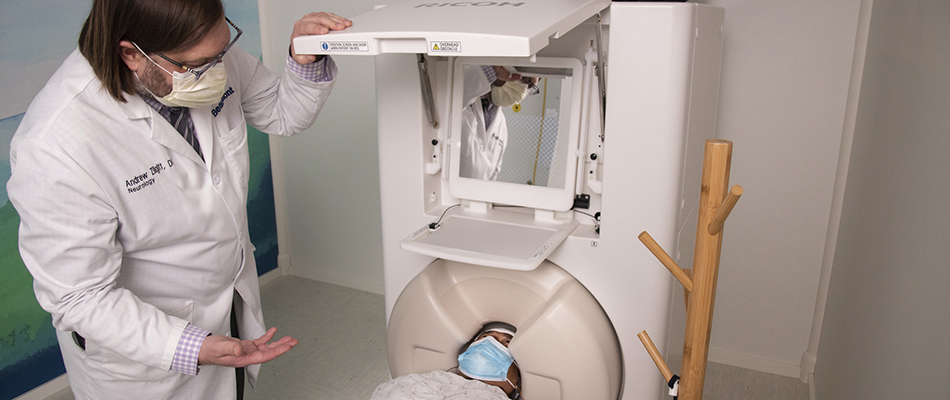 MEG provides physicians with a map of the brain’s critical functions to include motor, visual, auditory, sensory and language function.
MEG provides physicians with a map of the brain’s critical functions to include motor, visual, auditory, sensory and language function.
Magnetoencephalography (MEG) is a non-invasive tool used to explore the brain’s inner regions by measuring neuronal signals and recording the magnetic field created from electrical currents of the neurons.
The Beaumont MEG features an increased number of sensors to reduce magnetic interference and its robust sensitivity and advanced algorithms filter out noise so signals of interest can be easily identified.
What is MEG used for?
MEG’s advanced technology is used in combination with MRI and EEG to assist physicians in treating epilepsy in adults and children by safely identifying and locating abnormal and normal brain activity. The ability to measure deep within the brain
enables your team of physicians to detect and record brain activity down to the level of the hippocampus.
MEG’s advanced brain imaging safely delivers the following patient benefits:
- measures and records electromagnetic activity within the brain to show normal versus abnormal brain activity
- significantly improves the possibility of better patient surgical outcomes
- does not use applied magnetic fields,radiation or injections
- is a non-invasive, silent device that allows patients to lie in a comfortable position without the fear of noise
- enables researchers and doctors to see previously unexplored activities of the brain
What's the difference between MEG, MRI or EEG?
MRI (magnetic resonance imaging) provides structural information for determining how the sizes of certain brain areas compare across people or if there is something abnormal about a particular brain (a tumor for example).
MEG and EEG are closely related but still there are differences. EEG detects the electric potentials generated by neural currents, while MEG measures the corresponding magnetic fields.
By combining MEG sources with a patient’s brain MRI, epidemiologists
are able to identify areas of the brain that are producing seizures or eloquent brain function.